Cast Iron Pot Garden Ideas: Creative Ways to Spice Up Your Garden
Gardening is a wonderful way to add beauty and a personal touch to your outdoor space. Using cast iron pots in your garden can create a charming and unique look that stands out. These sturdy containers not only enhance the visual appeal but also offer durability and practicality.

You might be wondering how to make the most of these cast iron pots in your garden. The possibilities are endless, and with a little creativity, you can transform your garden into a delightful haven. From colorful flowers to aromatic herbs, there’s so much you can do with these versatile containers.
1) Herb Garden in a Cast Iron Pot
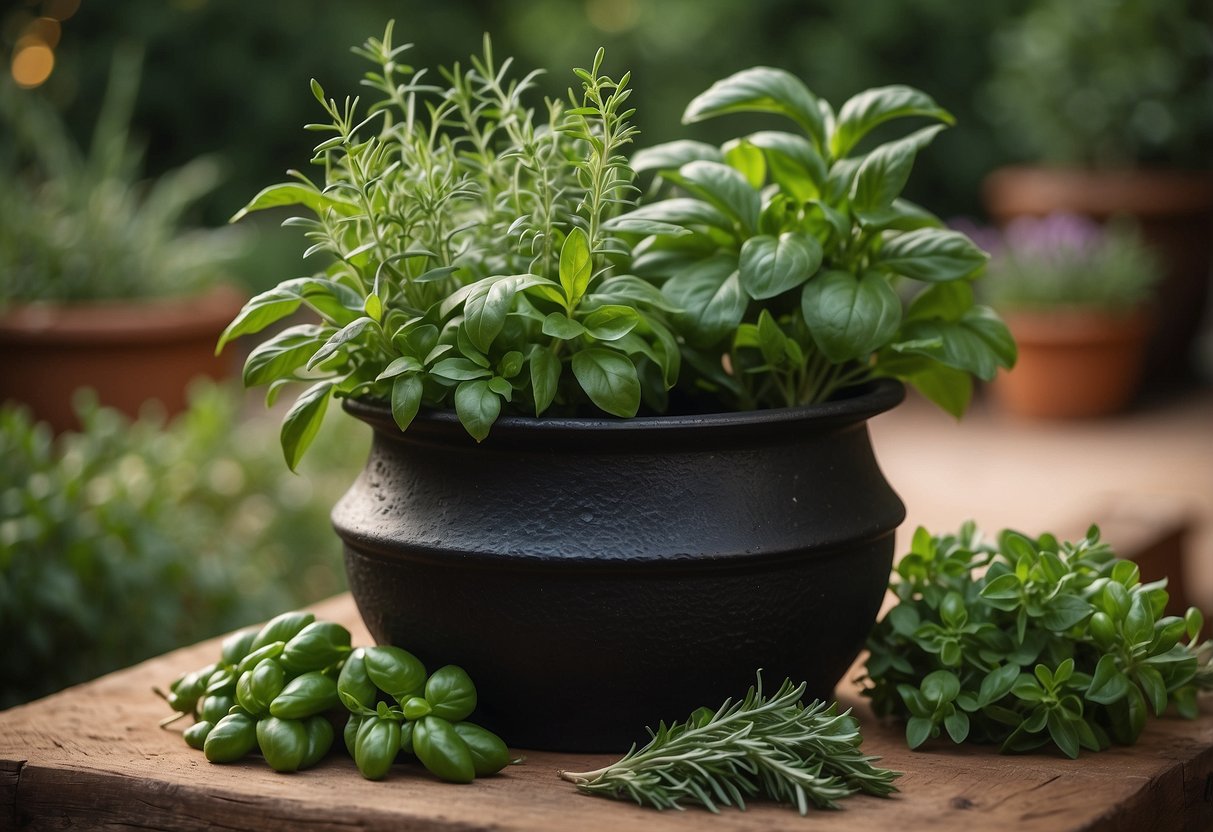
You can grow a beautiful herb garden in a cast iron pot. This type of pot is durable and looks great in any setting. The herbs will thrive with the proper care.
Try planting basil, thyme, and oregano together. These herbs share similar water and sunlight needs. Their flavors also complement each other beautifully in many dishes.
A cast iron pot helps maintain soil temperature, which is beneficial for the herbs’ growth. Don’t forget to check the soil moisture regularly. A good mix of compost and potting soil can provide the nutrients needed for your herbs.
2) Succulent Arrangement
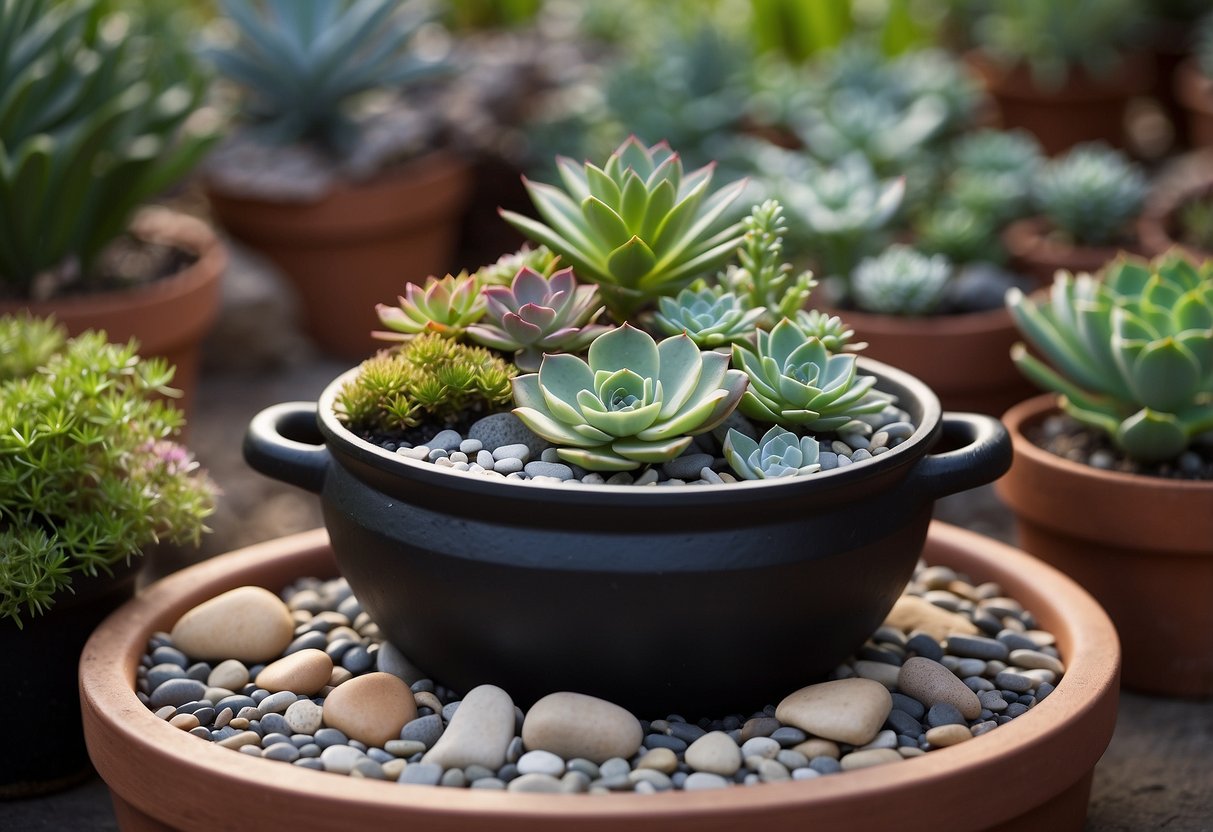
You can create a stunning succulent arrangement in a cast iron pot. Pick a variety of succulents with different shapes and colors. Mix tall and short plants for a dynamic look.
Try combining a large Echeveria with smaller Portulacaria. This gives height contrast. Place your pot where it gets lots of sunlight. This helps your succulents thrive.
Consider using pebbles or small stones to finish the look. This adds texture and keeps the soil in place. Happy gardening!
3) Mini Vegetable Patch
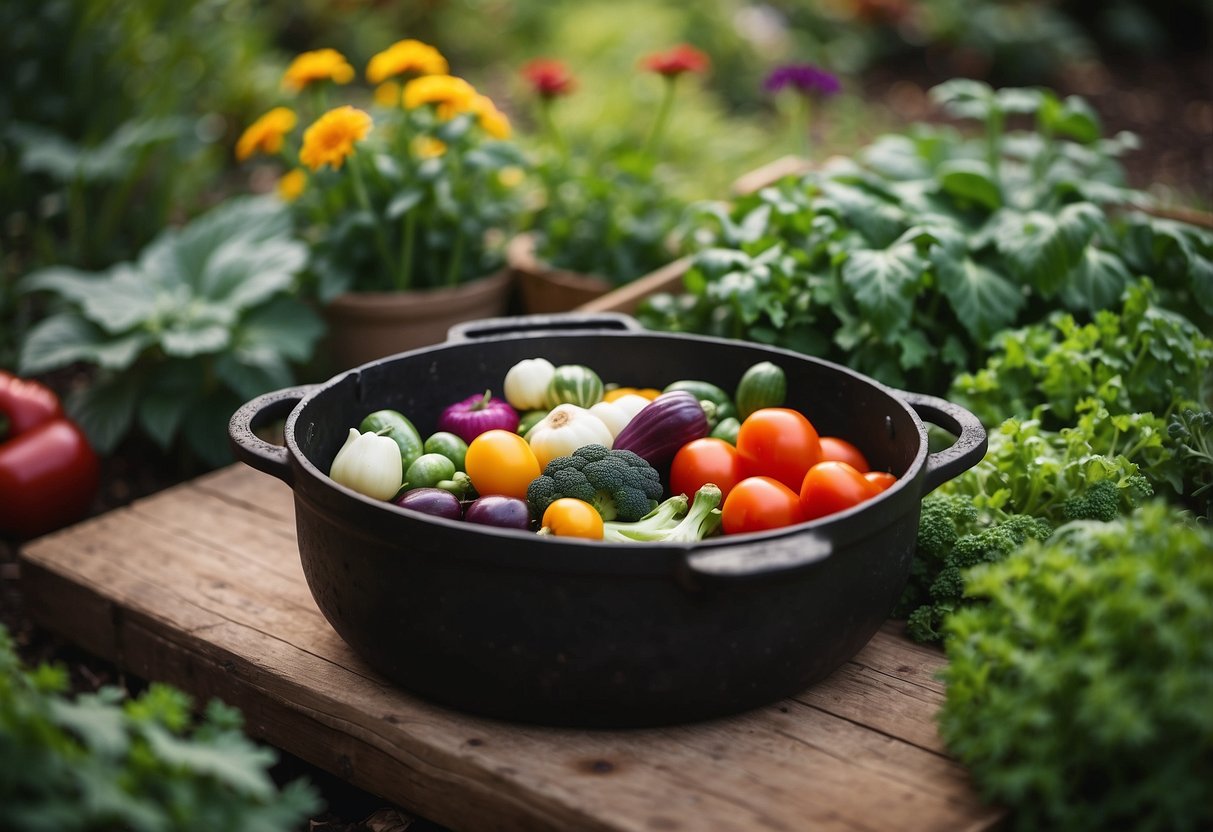
A cast iron pot is perfect for creating a mini vegetable patch on your patio or balcony. You can grow a variety of veggies like baby beets and cherry tomatoes in these pots.
Compact vegetables like lettuce, spinach, and radishes thrive in smaller spaces. A pot with at least 12 inches of depth allows roots to grow well, ensuring healthy plants.
If you’re looking for higher yields, matching container sizes to the vegetable is key. For instance, baby beets do well in a 10-inch deep pot.
4) Fairy Garden with Figurines
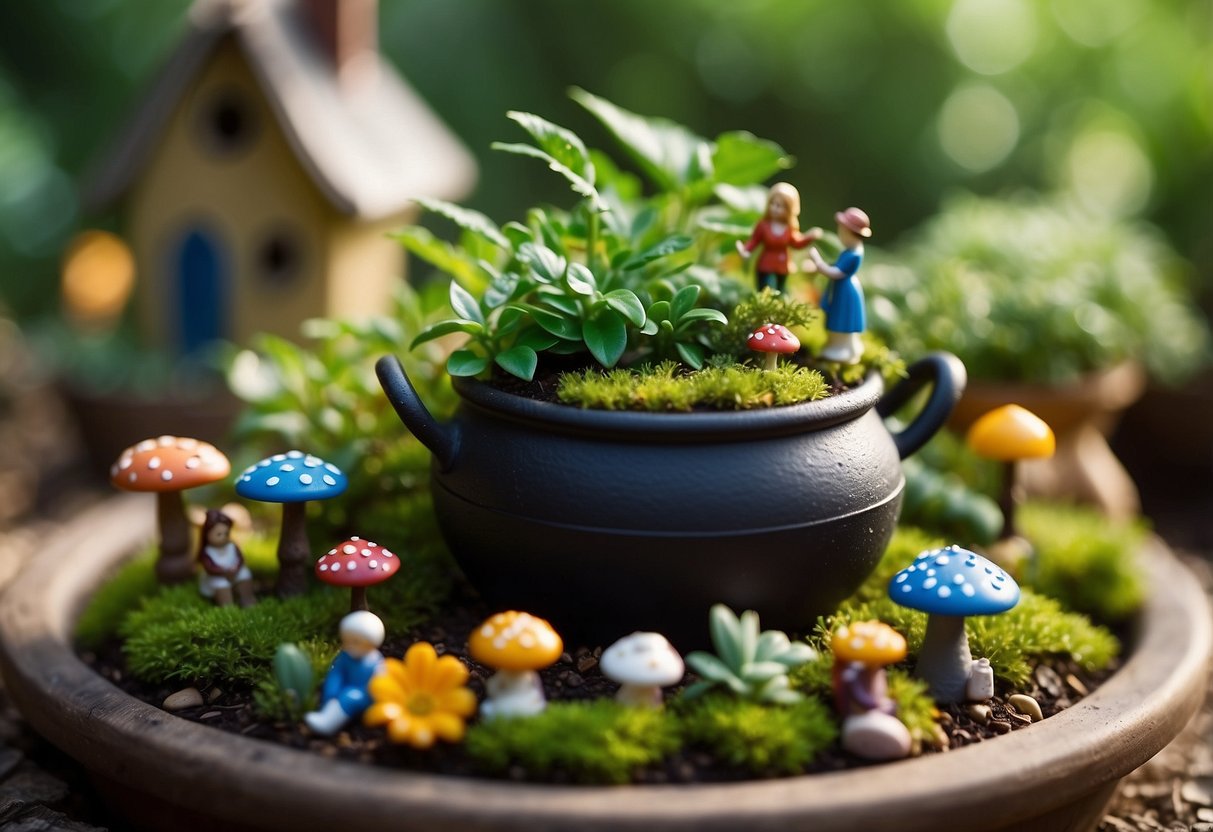
Using a cast iron pot, you can create a magical fairy garden filled with charming figurines. Start by placing a small fairy house as the centerpiece.
Surround it with tiny woodland creatures or miniature fairies to bring the scene to life. Add some moss or creeping thyme for a soft, lush ground cover.
Incorporate small plants and flowers around the figurines. For more ideas, check out these DIY fairy garden ideas.
5) Water Feature Base
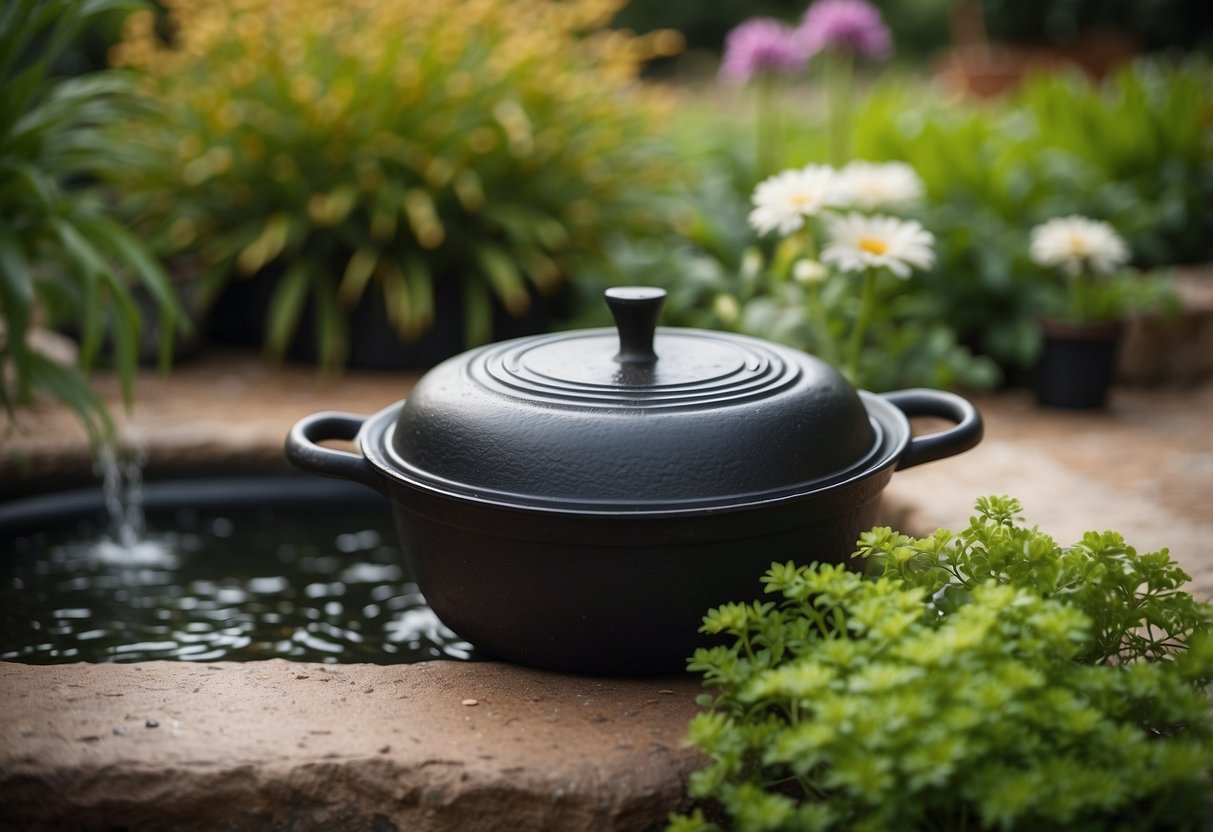
You can use cast iron pots as the base for a beautiful water feature in your garden.
Start by choosing a cast iron pot with no drainage holes. This will hold the water well.
Add a submersible pump to keep the water circulating. You can hide the pump with rocks and plants.
Be creative with your plant choices. Water hyacinth or water lettuce are great options.
6) Painted Pot Planter

A painted pot planter can add a splash of color to your garden. You can use terracotta, plastic, or ceramic pots for this project.
Choose a type of paint that works for your pot’s material. Acrylic and spray paints are often recommended.
Remember to let each coat dry completely before adding the next. This ensures a smooth, even finish.
Once the paint is dry, seal it with a clear sealer to protect your design and keep it looking fresh for years. Check out these paint ideas for inspiration.
7) Stacked Pot Fountain

A stacked pot fountain can be an enchanting addition to your garden.
To start, gather a few pots of different sizes. The largest should go at the bottom.
Place rocks at the bottom of each pot for drainage. Then, fill the rest with soil.
Add a small water pump in the top pot. This will circulate water through the stack.
Finally, arrange your favorite plants around the pots to complete the look.
For more detailed instructions, check out this guide.
8) Hanging Herb Garden
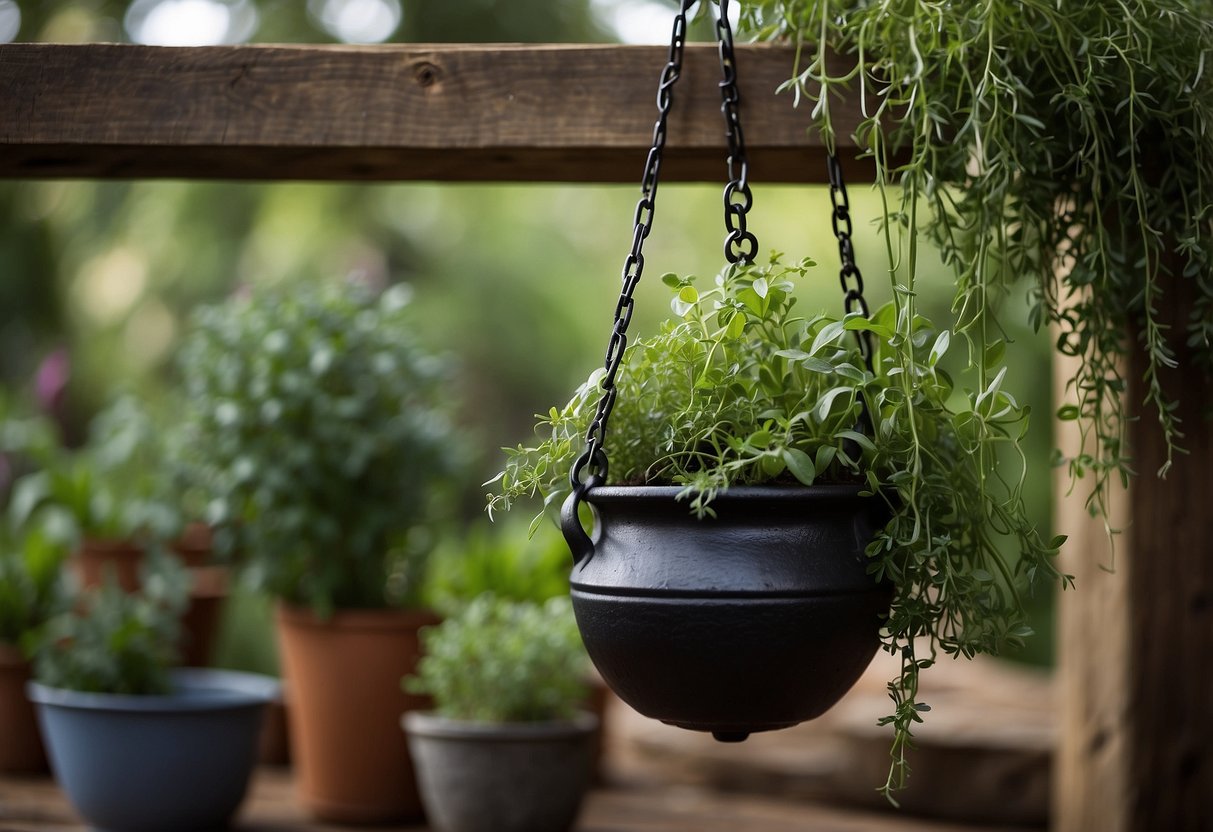
Using a hanging herb garden in your cast iron pots can save space and look stylish. To get started, you will need some sturdy hooks and rope. This method is great for small spaces like balconies or kitchens.
Choose herbs that thrive in your available light. For instance, basil and mint do well with plenty of sunlight. Secure your pots and make sure they have proper drainage. This way, your herbs will grow strong and healthy all year round.
9) Flowering Plant Display
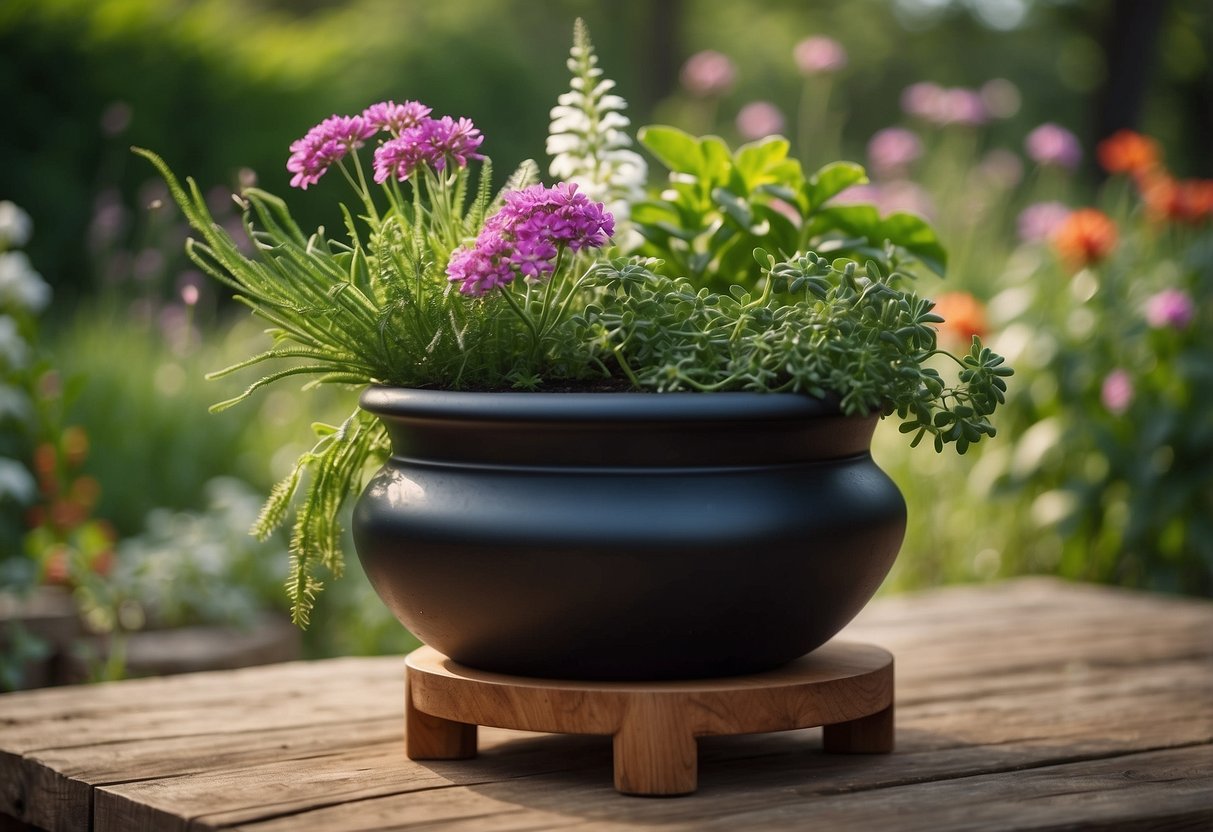
Enhance your garden with a flowering plant display. Start by planting vibrant blooms like impatiens and coleus. These colorful plants thrive in partial shade.
Consider adding purple fountaingrass for extra height and texture. It’s also low-maintenance and adds a striking color to your container.
To complete the look, mix in angelonia and calibrachoa for continuous blooms. They will keep your garden lively throughout the season.
10) Moss-Covered Pot
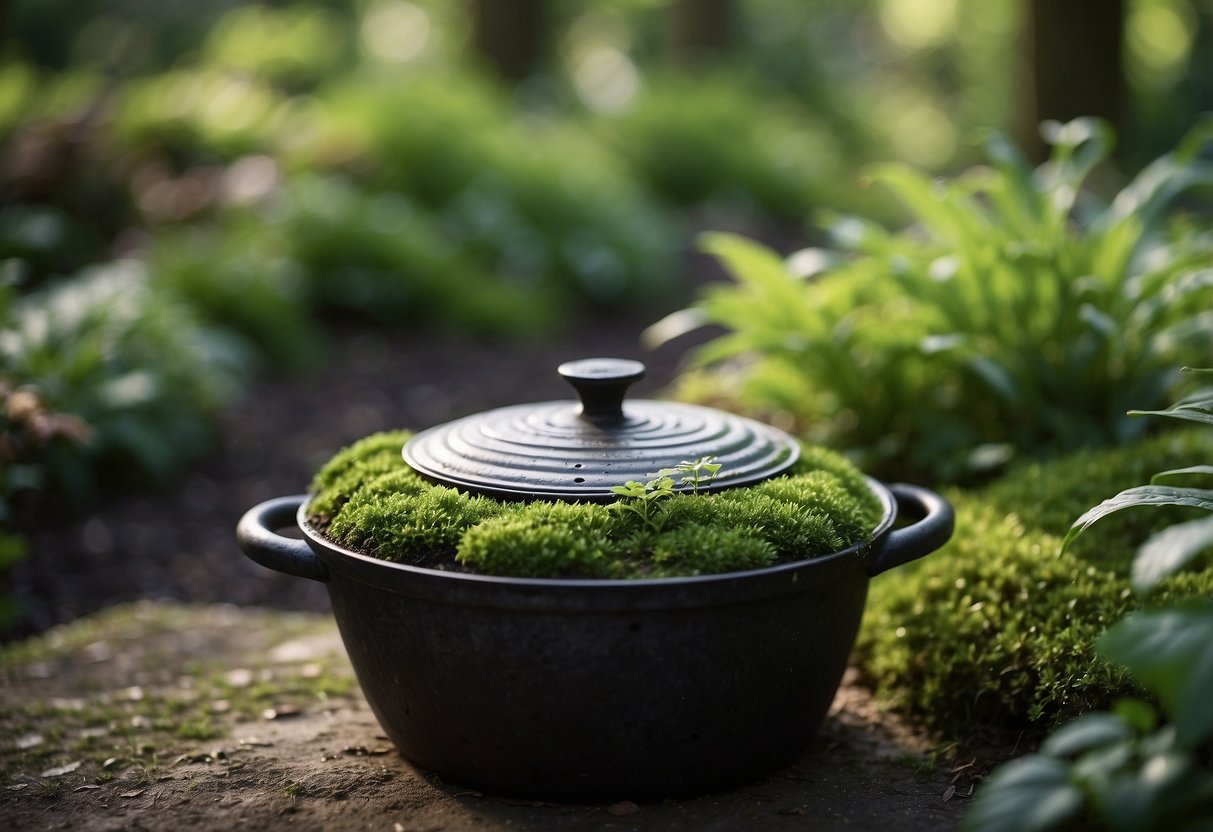
Creating a moss-covered pot for your garden is a fun and easy project. Start by soaking sheet moss in water until it’s damp but not soaking wet. This makes it more flexible and easier to work with.
Next, apply glue like ModPodge to the surface of your pot. Press the moss onto the glued areas. You might need someone to hold the moss in place while you attach it with thin floral wire.
Trim any excess moss with scissors to make it neat. This method works great for adding a natural, rustic touch to your garden.
For more details, visit Savvy Gardening.
Benefits of Using Cast Iron Pots in Your Garden

Using cast iron pots in your garden provides many advantages. They offer impressive durability and remarkable versatility, allowing you to plant various types of flora with ease.
Durability and Longevity
Cast iron pots are known for their durability. They can withstand harsh weather conditions such as rain, snow, and intense sunlight. This makes them perfect for outdoor use.
Unlike plastic pots that may crack or degrade over time, cast iron pots maintain their integrity for years. You’ll find that they’re resistant to rust when properly cared for. Cleaning them with warm, soapy water and drying thoroughly helps keep them in good condition.
These pots are also heavy, making them less likely to tip over during strong winds. The weight adds stability, ensuring your plants stay upright and safe. Because of these features, cast iron pots are a long-term investment for any garden enthusiast.
Versatility in Planting
Cast iron pots are incredibly versatile. They can accommodate a wide range of plants, from small flowers to larger shrubs. Their deep structure allows for ample root growth, which is essential for the health of your plants.
You can easily use them for both indoor and outdoor plants. Whether you want to display a vibrant flower arrangement on your patio or grow herbs in your kitchen, these pots fit the bill.
Their aesthetic appeal adds charm and character to your garden space. Whether you prefer a rustic look or something more modern, cast iron pots blend well with various garden styles. This versatility makes them a popular choice for gardeners looking to add both function and beauty to their green spaces.
Choosing the Right Cast Iron Pot for Your Garden
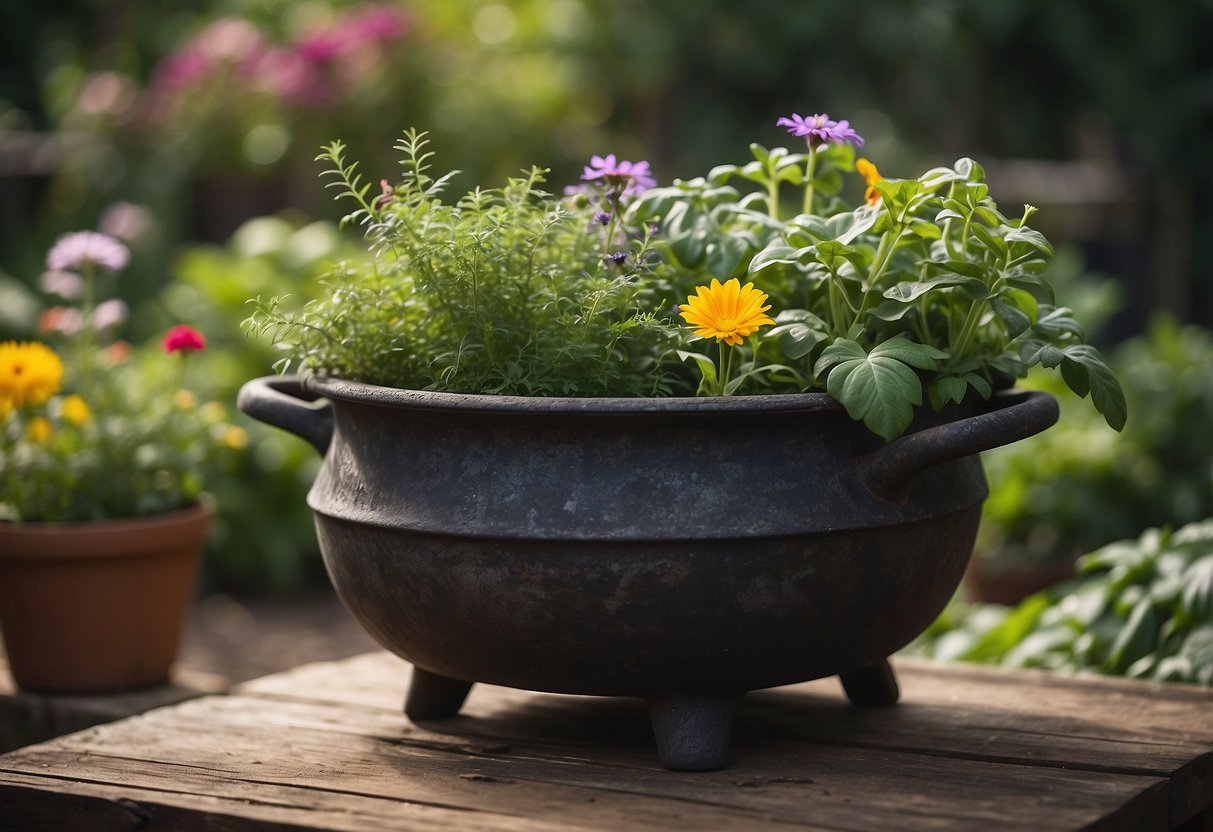
Picking the right cast iron pot involves looking at size, shape, and how it fits with your garden’s style. The right choice can enhance both the appearance and functionality of your garden space.
Size and Shape Considerations
When selecting a cast iron pot, the size is a crucial factor. A pot that’s too small will restrict plant growth, while one that’s too large might be overwhelming. Aim for a pot that leaves enough room for roots to spread. Recommended sizes are between 10 to 20 inches in diameter for most garden plants.
Shape also matters. Round pots are versatile and can hold many types of plants. Rectangular pots are great for lining walkways or edges. Shallow pots are perfect for succulents and herbs, while deeper pots work well for larger plants.
Consider the pot’s weight. Cast iron is heavy, so moving it around might be tricky. Plan your garden layout with this in mind, so you don’t face any difficulties later.
Aesthetic Appeal
The look of your cast iron pot can greatly impact your garden’s charm. Cast iron pots come in various designs, from simple and sleek to ornate and rustic. Choose a design that complements your garden’s theme. A rustic pot might add character to a country-style garden, while a sleek, black pot suits a modern setting.
Color also plays a role. Traditional black or gray cast iron offers a classic look and matches well with most plants. For a more unique touch, you might find cast iron pots in different finishes like bronze or aged patina.
Additionally, think about the pot’s finish. Smooth finishes are easier to clean, while textured ones add visual interest. Consider adding a mix of textures and finishes to keep your garden visually engaging.
Choosing the right pot can help create a beautiful and functional garden space that’s a joy to spend time in.
Caring for Your Cast Iron Garden Pots

Taking good care of your cast iron garden pots can extend their life and keep them looking great. Key tasks include regular cleaning and maintenance, as well as measures to prevent rust.
Cleaning and Maintenance Tips
To keep your cast iron garden pots in top shape, start by cleaning them with a rag and warm, soapy water. Scrubbing off dirt and grime helps maintain their appearance. After washing, rinse well and dry thoroughly. It’s important to make sure the pots are completely dry to avoid any rust formation.
For stubborn stains or grime that won’t come off with soap and water, you can use a mixture of vinegar and water. Soak a cloth in this mixture and wipe down the pot. You can also soak the pot in a half vinegar, half water solution for an hour, then scrub and rinse.
Inspect your pots regularly for any signs of damage or rust. A little routine attention will go a long way in preserving these garden accessories.
Preventing Rust
Rust can be a big problem for cast iron, especially in outdoor environments. To prevent this, always ensure your pots are dry before storing or using them. Moisture is the main cause of rust, so it’s crucial to manage it.
Consider applying a thin layer of vegetable oil or a rust-inhibiting spray to the surface of the pots. This acts as a barrier to moisture.
If you notice any rust spots, tackle them immediately. Use a wire brush or abrasive pad to scrub away the rust, then clean and dry the area. Applying oil after removing rust helps prevent further damage.
Limit the exposure of your pots to harsh weather by placing them in sheltered spots when not in use. This way, they remain in good condition, ready to beautify your garden for years.







